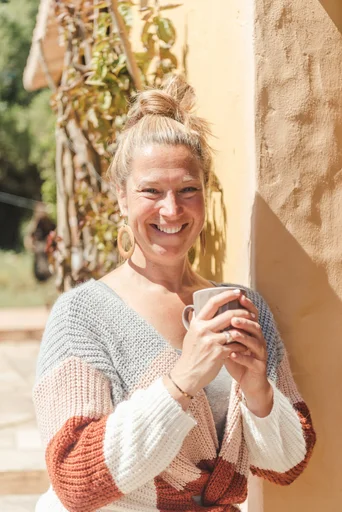Revolved Side Angle Pose: How to Do Parivrtta Parsvakonasana

Discovering the Revolved Side Angle Pose
Parivrtta Parsvakonasana, commonly known as Revolved Side Angle Pose, is a dynamic yoga posture that combines strength, flexibility, and balance. The name "Parivrtta Parsvakonasana" originates from Sanskrit, with "parivrtta" meaning "revolved," "parsva" meaning "side," and "kona" meaning "angle." This pose involves a deep twist of the torso while in a lunge position, providing numerous physical and mental benefits.
The Meaning Behind the Name
The term "Parivrtta Parsvakonasana" perfectly describes the posture's key elements. The revolved nature of the pose emphasizes the spinal twist, promoting flexibility and detoxification. By focusing on the side angle, it targets the hips and thighs, enhancing strength and stability in these areas. The combination of these movements creates a holistic experience for both body and mind.
Benefits of the Pose
The practice of Parivrtta Parsvakonasana offers a wide array of benefits. It stretches and strengthens the legs, particularly the quadriceps and hamstrings. Additionally, it engages the core muscles, promoting stability and balance. This pose also stimulates digestion by massaging abdominal organs, aiding in preventing indigestion and constipation.
Why Practice Revolved Side Angle Pose?
In today's fast-paced world, where stress levels are high and physical activity is often limited, incorporating Revolved Side Angle Pose into one's routine can be highly beneficial.
Physical Benefits
The pose helps improve cardiovascular fitness by engaging large muscle groups while also enhancing flexibility in the spine. It also aids in strengthening knees, ankles, thighs, and abdominal muscles.
Mental and Emotional Benefits
Studies have shown that practicing Parivrtta Parsvakonasana can have positive effects on mental health by increasing overall stamina and promoting a strong connection between both brain hemispheres. Furthermore, it has therapeutic effects that help reduce stress levels.
By integrating this powerful yoga posture into your practice routine, you can experience an overall improvement in physical health while also nurturing mental well-being.
Preparing for Parivrtta Parsvakonasana
Before diving into the dynamic and invigorating practice of Parivrtta Parsvakonasana, it is essential to prepare the body and mind through a series of warm-up poses and an understanding of one's physical limits.
Essential Warm-Up Poses
Mountain Pose (Tadasana)
To begin your yoga practice, start with the foundational Mountain Pose, also known as Tadasana. Stand tall with your feet hip-width apart, grounding them firmly into the earth. Engage your thigh muscles while lengthening your tailbone towards the floor. As you inhale, reach your arms overhead, elongating your spine and lifting through the crown of your head. This pose not only helps in improving posture but also serves as a starting point to center yourself before moving into more challenging postures like Parivrtta Parsvakonasana.
Warrior II (Virabhadrasana II)
Warrior II is another fundamental pose that prepares the body for the Revolved Side Angle Pose. From a standing position, step one foot back while keeping the front knee bent at a 90-degree angle. Extend your arms parallel to the ground, with your gaze fixed over the front fingertips. This powerful pose strengthens the legs and opens up the hips, making it an ideal precursor to Parivrtta Parsvakonasana.
By incorporating these essential warm-up poses into your routine, you can gradually awaken and engage the muscles required for Parivrtta Parsvakonasana while also cultivating a sense of focus and presence.
Understanding Your Body's Limits
Listening to Your Body
Yoga is a deeply personal practice that requires attentiveness to one's own body. Before attempting Parivrtta Parsvakonasana or any challenging yoga posture, it is crucial to listen to your body's signals. Pay attention to any sensations or discomfort that arise during warm-up poses or throughout your practice. By honoring these signals, you can prevent potential injuries and cultivate a safe and sustainable yoga practice.
The Importance of Flexibility and Strength
Flexibility and strength are integral components of any yoga practice, especially when preparing for advanced postures like Parivrtta Parsvakonasana. While flexibility allows for greater range of motion during twists and bends, strength provides stability and support in holding these poses. Balancing these two elements is key to unlocking the full potential of Parivrtta Parsvakonasana while minimizing the risk of strain or injury.
As you progress in your yoga journey, remember that each individual's limits may vary. Embrace where you are in your practice today while nurturing aspirations for growth in both flexibility and strength.
Incorporating these warm-up poses and acknowledging your body's boundaries sets a solid foundation for approaching Parivrtta Parsvakonasana with mindfulness and readiness.
Step-by-Step Guide to Revolved Side Angle Pose

Now that we have explored the significance and preparation for Parivrtta Parsvakonasana, it's time to delve into the step-by-step guide for performing this invigorating yoga posture. Mastering the correct alignment and breathing techniques is essential in reaping the full benefits of this pose.
Getting Into Parivrtta Parsvakonasana
Starting Position
Begin in a standing position at the top of your mat, then step your feet approximately 3 to 4 feet apart. Turn your right foot out at a 90-degree angle and pivot your left foot slightly inward, ensuring that both heels are aligned. Engage your quadriceps and draw energy up through your legs.
The Twist
As you exhale, bend your right knee directly over the ankle, creating a 90-degree angle with the thigh parallel to the floor. Keep your left leg straight and strong as you ground the outer edge of your back foot into the mat. Inhale deeply as you lengthen through your spine, lifting through the crown of your head.
The Final Position
On an exhalation, twist towards the bent knee, bringing your left elbow to the outside of the right thigh. Press your palms together in a prayer position at heart center or extend them overhead with arms parallel to each other. Gently press into your hands while actively twisting deeper with each breath. Lift through your chest and draw your shoulder blades down toward your waist.
Breathing and Focusing
Breathing Techniques
Throughout Parivrtta Parsvakonasana, maintain steady and controlled breathing. Inhale deeply to elongate through the spine, creating space within the body. As you exhale, use this newfound space to deepen into the twist while maintaining stability in both legs. Emphasize smooth and even breaths, allowing them to guide you deeper into the pose without strain.
Maintaining Focus and Balance
Focus on a point directly ahead or upwards if extending arms overhead, aiding in maintaining balance and concentration during this dynamic posture. Engage drishti (gaze) by fixing it on a non-moving point to steady both body and mind.
By following these detailed steps for entering Parivrtta Parsvakonasana along with mindful breathing techniques, one can experience an enhanced sense of physical awareness and mental clarity throughout their practice.
Common Mistakes and Modifications

As with any yoga posture, it's essential to be mindful of common mistakes that can arise during the practice of Revolved Side Angle Pose. Additionally, modifications tailored to beginners can provide a supportive foundation for mastering this dynamic posture.
Identifying and Correcting Common Mistakes
Alignment Issues
One common mistake in Parivrtta Parsvakonasana is misaligning the front knee, which can lead to unnecessary strain on the knee joint. To avoid this, ensure that the front knee is directly above the ankle when bending into the lunge position. This alignment helps in distributing weight evenly and prevents potential discomfort or injury.
Another alignment issue to watch out for is collapsing through the chest and shoulders. Maintaining an open chest while twisting ensures proper engagement of core muscles and allows for a deeper twist without compromising stability.
Breathing Incorrectly
Improper breathing can hinder the full experience of Revolved Side Angle Pose. Holding one's breath or breathing shallowly limits the body's ability to expand and deepen into the pose. It's important to synchronize each movement with intentional breaths, allowing for a seamless flow of energy throughout the body.
To correct these mistakes, focus on maintaining steady and controlled breathing throughout the entire duration of Parivrtta Parsvakonasana. Inhale deeply as you lengthen through your spine, creating space within your body, and exhale slowly as you deepen into the twist, maintaining stability in both legs.
Modifications for Beginners
Using Props
For beginners or individuals with limited flexibility, incorporating props such as yoga blocks can provide valuable support in achieving proper alignment and depth in Parivrtta Parsvakonasana. Placing a block under the hand that reaches towards the floor can assist in maintaining balance while allowing for a more comfortable twist.
Additionally, using a yoga strap can help bridge any gap between hands when clasping them behind the back during the pose. This modification enables individuals with tighter shoulders to gradually work towards achieving a full bind while ensuring proper shoulder alignment.
Alternative Poses
For those who are still building strength and flexibility, there are alternative poses that offer similar benefits to Revolved Side Angle Pose. One such pose is Ardha Uttanasana (Half Standing Forward Bend), which provides an opportunity to engage in a gentle twist while standing upright. This variation allows individuals to focus on spinal rotation without bearing weight on their arms or legs.
Another alternative is Marichyasana I (Pose Dedicated to Sage Marichi I), which involves seated twisting postures that offer deep stretches along with opportunities for gradual progression towards more advanced twists like Parivrtta Parsvakonasana.
By incorporating these modifications into your practice routine, you can create a supportive environment for learning and mastering Revolved Side Angle Pose, ensuring that it remains accessible regardless of individual experience levels or physical limitations.
Wrapping Up
Now that you have gained insights into the intricacies of Revolved Side Angle Pose or Parivrtta Parsvakonasana, it's time to explore how to seamlessly integrate this empowering yoga posture into your practice while fostering a mindset of adaptability and self-reflection.
Integrating Revolved Side Angle Pose Into Your Practice
Building a Routine
Incorporating Revolved Side Angle Pose into your regular yoga routine can significantly contribute to your overall physical and mental well-being. Consider designating specific days for focusing on standing poses and twists, where Parivrtta Parsvakonasana can take center stage. By establishing a consistent schedule, you create space for growth and mastery of this dynamic posture while reaping its numerous benefits.
As you build your routine, remember to approach each practice with an open mind and a willingness to embrace the journey towards deeper understanding and proficiency in Parivrtta Parsvakonasana.
Listening and Adapting
Yoga is a deeply personal practice that evolves over time. As you navigate the nuances of Revolved Side Angle Pose, prioritize active listening to your body's signals. Pay attention to areas of tension or ease during the pose, allowing these observations to guide any necessary adjustments or modifications. Embrace adaptability as an essential component of your yoga journey, fostering an environment where growth and self-awareness flourish.
Encouragement and Final Thoughts
Personal Reflections
Embarking on the exploration of Parivrtta Parsvakonasana is not merely about mastering a physical posture; it's also an opportunity for personal growth. Reflect on the progress you make in each practice session, celebrating both small victories and moments of resilience. Embrace the journey with compassion towards yourself, recognizing that every step forward is a testament to your dedication and perseverance.
Encouraging Consistency and Patience
Consistency is key in nurturing a sustainable yoga practice. Embrace each opportunity to engage with Revolved Side Angle Pose, knowing that each session contributes to your growth, both on and off the mat. Cultivate patience as you navigate the intricacies of this empowering posture, understanding that progress unfolds at its own pace. Trust in the process, honoring each moment dedicated to refining your practice.
See Also
Creating Body Symmetry: The Impact of Yoga on Scoliosis
Thirteen Yoga Poses Using a Chair
Truthful Yoga Flow: Asana, Chant, Gesture, Contemplation | Ethical Principles
Iyengar Essentials: Achieving Handstand Stability with Carrie Owerko
We bring back the importance of initiation into womanhood by Roos-Veerle Krijnen & Ella-June Henrard
Welcome to the Women’s Initiation Retreat by Naked Truth Retreats, a transformative journey into the depths of your True Feminine Nature. This retreat, scheduled from 17th to 24th August 2024 in Portugal, invites you to remember the sacredness and wholeness of your being.
Roos-Veerle Krijnen & Ella-June Henrard



